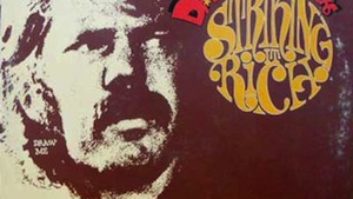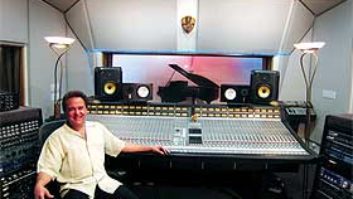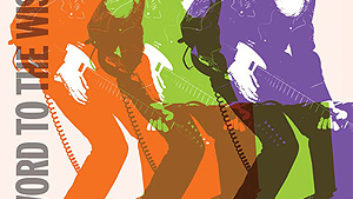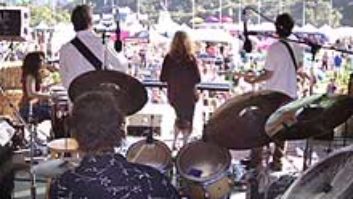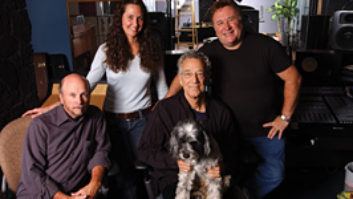A few years ago, Maria Muldaur had an epiphany. She was in Memphis to attend the W.C. Handy Awards (for the finest blues recordings), and one night, while she was wandering the streets, a blues band who was playing for a small crowd on a little makeshift stage in an alley off Beale Street unexpectedly invited Muldaur to come up and join them for a song. Muldaur scrambled to think of a song that she and the band both knew and ended up singing Memphis Minnie’s “Chauffeur Blues.” The next day, Muldaur and a friend went on a pilgrimage of blues sites in the nearby Mississippi Delta, visiting the graves of Memphis Minnie and Leadbelly, as well as Stovall’s Plantation, where Muddy Waters had made his first field recordings. Muldaur had been singing blues her entire professional life, dating back to her stint in the Jim Kweskin Jug Band in the mid-’60s, but there was something about suddenly finding herself in the famed “cradle of the blues” that was profoundly moving for her. Her last night in Memphis, she went to see her friend Bob Dylan perform, and she was struck, again, by how so many of the great musicians of her generation had been inspired by the same early blues players. Dylan’s then-current album, World Gone Wrong, was a testament to that — it consisted entirely of acoustic covers of old blues and folk tunes. Muldaur came away from her week in the South determined to record her own down-home tribute to the long-gone masters of the blues who had led her on her career path. It took a couple of years to germinate, but now Maria Muldaur’s Richland Woman Blues is out (on the Stony Plain label), and it stands with the best work of her long and varied career.
“I don’t think anyone’s going to accuse me of jumping on a bandwagon,” Muldaur says with a laugh as her tour RV pulls out of El Paso and heads for a gig in Houston. “I’ve been playing this music forever, it seems. But this is my own personal tribute. I have no idea what’s going on in the blues landscape at large at this moment, except that I do a lot of blues gigs and I try to stay abreast with my other female blues travelers when they have albums out or whatever. But this is for me, to quote Dylan, ‘bringing it all back home.’ It was just something where I was struck by the incredible power of these songs. If Bob Dylan, our most prolific writer, was doing an album of old songs by the Mississippi Sheiks and these others, and with only a guitar… well, it struck me how moving and relevant they still were at the end of the century, as they were in the ’20s. ‘World Gone Wrong’ — you couldn’t come up with a better summation of the whole century.”
In the manner of the Dylan disc, Muldaur’s Richland Woman Blues is stripped-down and unadorned — all of the 14 tracks are duos or trios, and there isn’t a drum on the disc. She’s enlisted a stellar cast to back her, as she moves easily through vintage tunes by the likes of Mississippi John Hurt, Bessie Smith, Leadbelly, Fred McDowell, Reverend Gary Davis and Blind Willie Johnson. Featured guitarists include John Sebastian, Roy Rogers, Amos Garrett, Alvin Youngblood Hart, Taj Mahal, Ernie Hawkins and Bonnie Raitt. Helping out on vocals are Taj, Raitt, Tracy Nelson and Angela Strehli.
“The first cut was Leadbelly’s ‘Grasshoppers On My Pilllow,’ which was done up at a studio [Sundae Sound] in Calgary, Canada, where Amos Garrett lives,” Muldaur notes. “And then it took off from there. Some of the others were done in my living room [nicknamed Oasis Studios]. I have an engineer friend with Pro Tools, John Jacob, and I’d say, ‘Bonnie Raitt is in town. Bring your stuff up to the house!’ So we’d set up a couple of mics and go for it. John worked tirelessly. Then we also did things at John’s studio [Small Treasure in San Jose, Calif.] and Dave Wellhausen’s studio [in San Francisco] and a few other places. It all depended on which studio was available when a certain artist was around.
“This was done on what I call a tweezer budget. A blues record, by nature, is usually made on a tiny budget. But this was done with so much love, and I had an ingredient I don’t normally have, which is the most important element — time. I had the time to make it right. We weren’t under any kind of pressure, and we could take the time to make it feel good. I can’t tell you the number of times I’ve worked on a record and it’s come down to a crunch at the end, and you find yourself mixing too fast and maybe settling for less than the best, because you’ve gotta get it out the door and into the record company’s hands. That sort of goes along with the territory, usually.”
Over the course of a 35-year career, Muldaur has worked in nearly every conceivable recording situation, from big-budget productions to simple, live, 2-track sessions. Her most famous and popular records, the mid-’70s Reprise albums Maria Muldaur (which contained the smash “Midnight at the Oasis”), Waitress in a Donut Shop and Sweet Harmony, spoiled her somewhat, because producers Lenny Waronker and Joe Boyd spared no expense in tracking down so many extraordinary musicians to back her up — everyone from Dr. John to Lowell George to Kenny Burrell to Ray Brown; just an incredible cast. “Back in those days, there was plenty of money to get the people and take the time to get it right,” she comments. “No one was in a hurry. You could be painstaking. You want the best blues piano? Call Dr. John. For swing stuff I got Benny Carter. I was already used to playing with really good musicians; that wasn’t new for me. But it certainly made picking the best musicians for every record a real priority for me, and from the beginning I did have a lot of input in that. And you know what? No one’s ever turned me down! I keep askin’ them, and they keep showing up to play on my records!
“On every album I’ve made in the last decade, whoever it says produced, I’m actually the person who chose all the material, chose 99 percent of the players, and then actually worked with the players to get the right groove and the right arrangement and shaped each song. I love working with musicians. When it’s at its best, it’s like we’re all breathing together. The players I like leave their egos at the door, and they’re there to serve the music. That’s what I live for, both live and the studio.”
Though she has never quite recaptured the commercial glory of her Reprise days, Muldaur has had a very fulfilling career, particularly since the early ’90s, when she cut the excellent Louisiana Love Call for Black Top Records. She recorded two very successful children’s albums, Sunny Side of the Street and Swingin’ in the Rain and a trio of strong, bluesy discs for Telarc — Fanning the Flames, Southland of the Heart and perhaps best of all, Meet Me Where They Play the Blues, which started out as a collaboration with Charles Brown but became a tribute to the blues great after he died early in the project. All three Telarc CDs are immaculately recorded (as usual) and show the breadth of Muldaur’s talent and her affinity for various roots music styles.
Richland Woman Blues is more intimate and, in some senses, more personal. Muldaur clearly relates to her blues progenitors, particularly the women. She draws strength from the lives and music of Memphis Minnie and Bessie Smith: “They had it so much tougher than I ever did, obviously. It was not easy to be a woman in show business in those days, particularly a black woman. But a lot of what they sang about was basic man-woman relationship stuff that’s still relevant today. Bessie Smith’s lyrics are always so great, and they have fantastic punch lines. They’re so pithy and true to life.”
At the beginning of her career, during her Jug Band days, Muldaur encountered a number of the blues giants who’d been rediscovered by the predominantly white folk music audience in the late ’50s and early ’60s, and she befriended two of them. “Victoria Spivey, who was probably in her late 60s at the time, took me under her wing because she signed the Even Dozen Jug Band [which included Muldaur, David Grisman and others]. She said, ‘Honey, when you get up there, it ain’t enough to just sing the song. You gotta get up there and strut yo’ stuff and show ’em what you got. You gotta command attention.’ So she gave me a lot of pointers on stage presence; she was very supportive. She was one of the first artists to ever have her own label. She had plenty of sass and savvy and attitude at her age. I also knew Sippie Wallace. The way these singers sang about their lives, and the attitude they had, was so much more realistic than anything that was being fed to us by pop culture at the time — what might have been in a Connie Francis song or whatever was on the radio. It’s just a real nitty-gritty and realistic approach to life that has served me well all these years.”
Although Richland Woman Blues sounds relatively spare, it was by no means a simple disc to make. It took a year and a half to pull it all together, and, because Muldaur is such a perfectionist, this was not one of those “okay, that’s a take, we’re done” projects. Some of her lead vocals, for instance, were edited from 15 or 20 takes, “but the thing with Maria is,” comments engineer/co-producer John Jacob, “every one of those takes will be really good. She has a great ear and will hear nuances in her performances that she likes.”
The CD was recorded and mixed entirely in Pro Tools, which made the sometimes laborious editing a snap. Jacob says he “hasn’t used a console in years,” preferring to go with the popular chain of good mics into good preamps to Pro Tools. His favorite vocal mic for this Muldaur project might surprise some: a B&K 4003, an omni he’s had fitted with a special ball head that he says gives it some of the characteristics of a Neumann M50. Guitars were typically miked with a matched pair of Neumann KM184s, though Bonnie Raitt’s powder-blue dobro begged for a third mic to pick up every bit of that Buick hubcap resonator sound. Some of blues pianist Dave Mathews’ parts and some of Muldaur’s final vocals were tracked in the fine ambient space of the Music Hall at the University of California at Santa Cruz. The session with Taj Mahal was a multi-hour marathon at Wellhausen Studios. Jacob used several different preamps on the project, including a PreSonus M-80 and a Focusrite. His primary compressor was a Waves Renaissance. He also used an Aphex Exciter here and there to give more dynamic range to the guitars. Jacob mixed primarily on Genelec 1032s.
Muldaur and Jacob tracked so many songs for the project that a second disc is already partially done, and, once again, the singer is finding more than enough willing collaborators for this ongoing labor of love. Her current tour, which has her traveling with guitarist Ernie Hawkins, the inimitable veteran Freebo on bass and New Orleans keyboardist Josh Paxton, has been drawing good reviews and enthusiastic crowds everywhere it goes. No doubt about it, these are good times for her, several lifetimes removed from the frenzy of “Midnight at the You Know What,” as she wryly calls that career break/albatross. “I wouldn’t trade what I’ve got now for anything,” she says. “I’ve been able to do whatever I want, musically, which ultimately, for people who are in it for artistic reasons, is a dream come true.”

